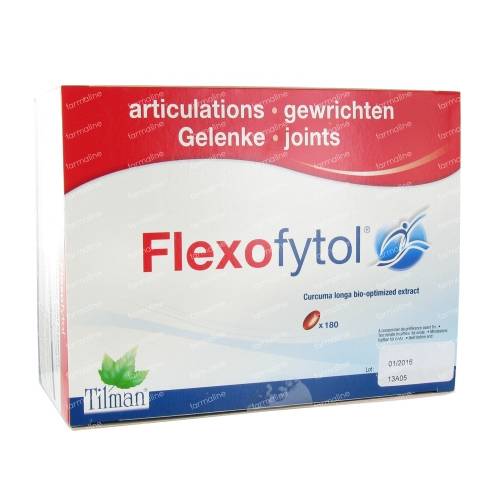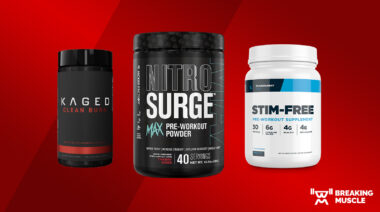As I sit here writing this article, my lower back is becoming tighter and tighter, reminding me that I did quite a bit of squatting today. Also, my knees are a little achy and my right hip is tender pretty much constantly. I sound like I’m complaining, but I’m not. My love for working out far outweighs the aches and pains I feel. However, I do know that being constantly inflamed isn’t a good thing. Inflammation when controlled and short-lived is great. Your body heals and comes back stronger and better than ever. When inflammation is chronic, though, bad things start happening. Injuries occur and disease processes begin. So, if you’re like me and you’re feeling achy and inflamed more often than not, it might be time to look into ways to decrease that inflammation.
Had any good Indian food? Random right? Well, not really. If you’ve had any tasty curries then you’ve probably ingested one of the most powerful, natural anti-inflammatory agents known to man. Good job! And you just thought you were having a tasty dinner. Turmeric, a spice used in many Asian and Indian dishes, contains the phenol curcumin and curcumin is a pretty amazing thing.
The Powers of Curcumin
Curcumin has been credited with helping prevent diseases such as cancer, atherosclerosis, and many neurodegenerative diseases because of its potent anti-oxidant and anti-inflammatory effects. More specifically, it inhibits cyclooxygenase (COX-2), lipoxygenase (LOX) and inducible nitric oxide (iNOS). So what? Well, COX-2, LOX, and iNOS are enzymes that mediate inflammatory processes in the body. Curcumin also inhibits the production of the inflammatory cytokines tumor necrosis factor-alpha (TNF-a), interleukin (IL) -1, -2, -6, -8, and -12, monocyte chemoattractant protein (MCP), and migration inhibitory protein and down-regulates mitogen-activated and Janus kinases.
Huh? Suffice it to say curcumin decreases inflammation in a major way. And if inflammation is nipped in the bud, the chronic diseases that would normally come about as a result of chronic inflammation are much less likely to occur.
Curcumin is also being studied in relation to its ability to prevent and treat neurodegenerative diseases like Parkinson’s, Alzheimer’s, and Huntington’s. This could be due to its well-known antioxidant and anti-inflammatory properties, but could be also the result of a modulation of protein aggregation and thus the prevention of the cause of these neurologically devastating illnesses.
Diseases thought to be prevented or symptoms mediated as a result of curcumin supplementation:
- Rheumatoid Arthritis
- Osteoarthritis
- Ulcerative colitis
- Pancreatitis
- Irritable Bowel Syndrome/Disease
- Dyspepsia and Gastric Ulcer
- Various Ocular Diseases
- Various Types of Cancer
- Neurodegenerative disease like Parkinson’s, Huntington’s and Alzheimer’s
Curcumin for Athletes
But, I’m writing for Breaking Muscle and while we all want to avoid cancer, Alzheimer’s, and IBS, what we really want to know is how can this curcumin stuff help me out right now? Can curcumin decrease my joint pain and help me recover faster? And if so, how much do I take? Well, yes, curcumin has been found in clinical trials to decrease joint pain, decrease inflammation, and improve joint mobility and function after eight months of treatment. So, yes, curcumin supplementation can definitely enhance your workouts and recovery and could be a beneficial supplement for athletes who have or want to prevent join pain and problems.
But the biggest problem with curcumin supplementation is its bioavailability. Curcumin, when given orally to human subjects, peaks in one to two hours then drops and is found in very low levels in the blood and with very little tissue distribution. It does, however, seem to accumulate in the intestinal mucosa. This may be beneficial for those with inflammatory GI issues, but for those of us with issues like joint pain and inflammation this presents a problem.

Ongoing research suggests that combining curcumin with other substances can dramatically increase its bioavailability and thus its usefulness in treating and preventing disease. A product called Flexofytol (Arantal) is a curcumin combination that results in a dramatically higher bioavailability and thus decreased joint pain in clinical trials. Unfortunately, Flexofytol isn’t available in the United States. However, Meriva, another curcumin combination option is available. It isn’t quite as potent as Flexofytol, but is far more bioavailable that other curcumin and turmeric supplements. You can buy it over the counter and it would be a worth a trial if you do suffer from joint pain and chronic inflammation, or just want to decrease systemic inflammation and keep the disease boogiemen away. Note: Safe and effective doses range between 4 and 12 grams per day with 8 grams generally being well tolerated by most individuals.
So, get thyself some curcumin to help with sore joints or to just prevent disease and feel better from stem to stern. However, make sure you are taking a supplement your body can actually absorb and take enough to see the benefit. Also, feel free to use the excuse that you are working on reducing inflammation every time you eat too much curry. I’ll totally back you up.
References:
1. Adriana, Monroy, Lithgow Gordon, and Silvestre Alavrez. “Curcumin and neurodegenerative diseases.” BioFactors. no. 01 (2013): 122-132. (accessed November 17, 2013).
2. Jurenka, Julie. “Anti-inflammatory Properties of Curcumin, a Major Constituent of Curcuma longa: A Review of Preclinical and Clinical Research.” Alternative Medicine Review. no. 02 (2009): 141-154. (accessed November 17, 2013).
3. V, Menon and Sudheer A. “Antioxidant and anti-inflammatory properties of curcumin.” ADVANCES IN EXPERIMENTAL MEDICINE AND BIOLOGY. (2007): 105-125. (accessed November 17, 2013).
Photos courtesy of Shutterstock.






